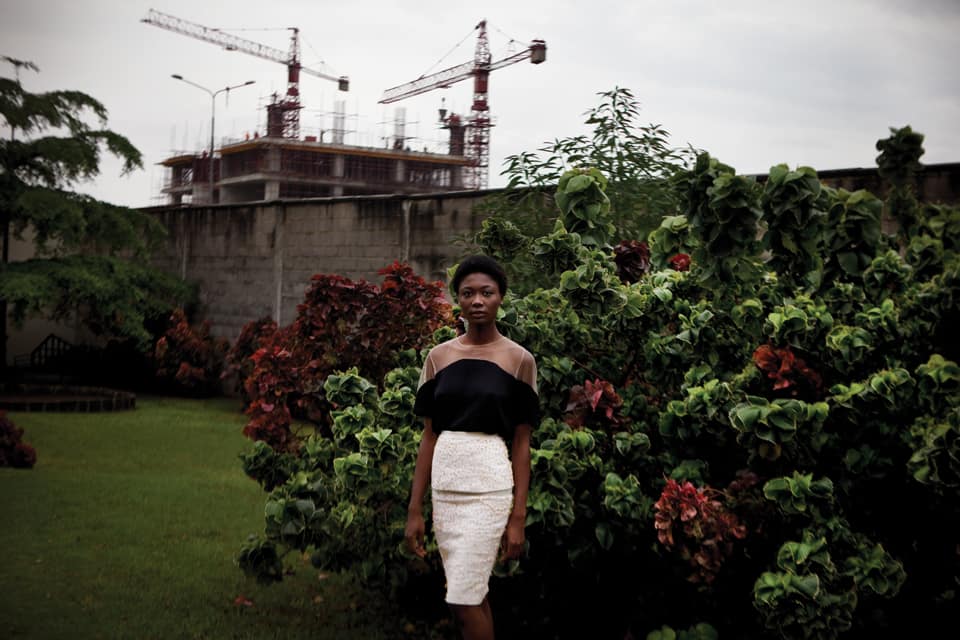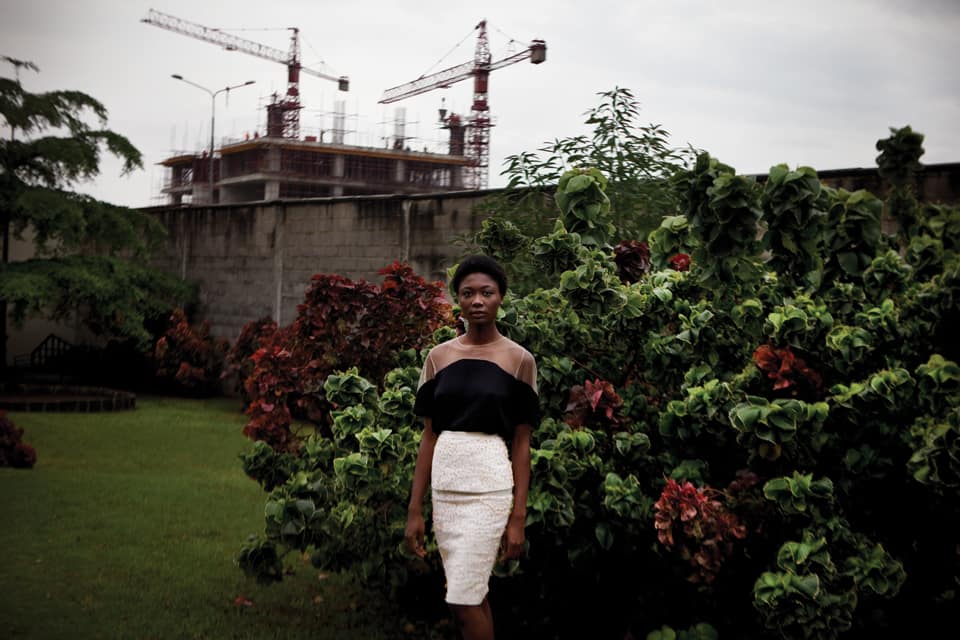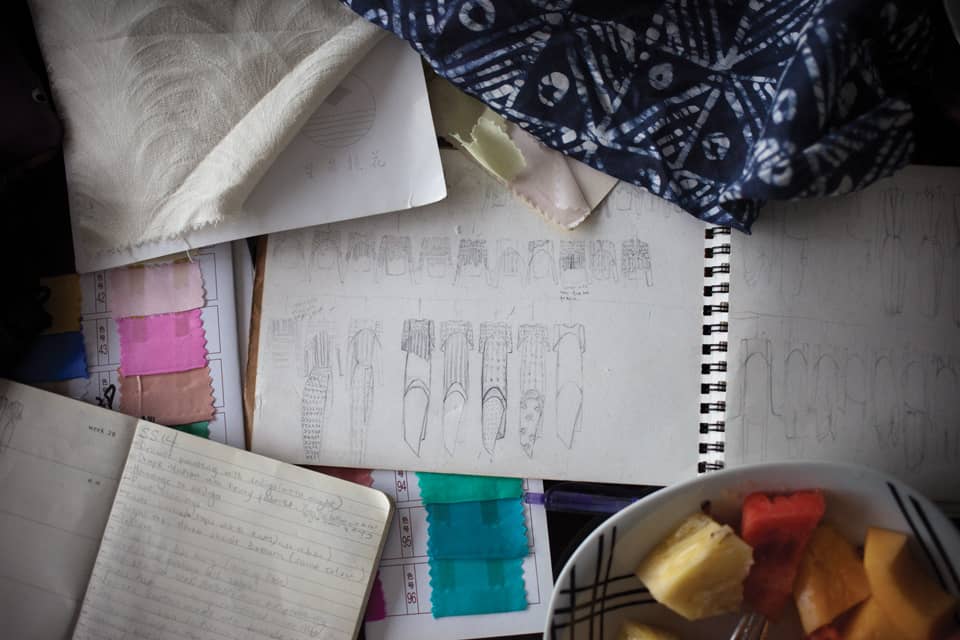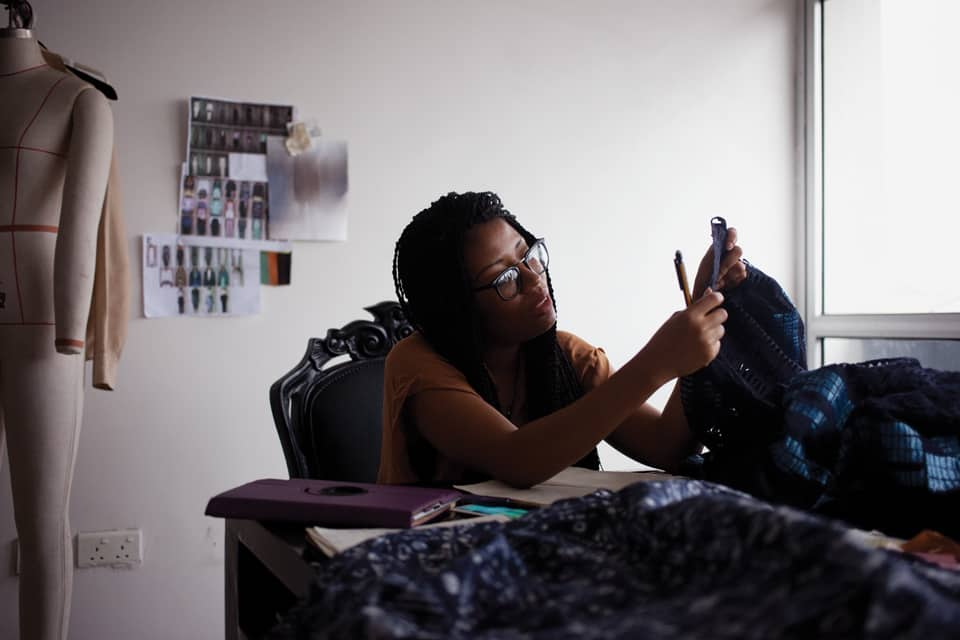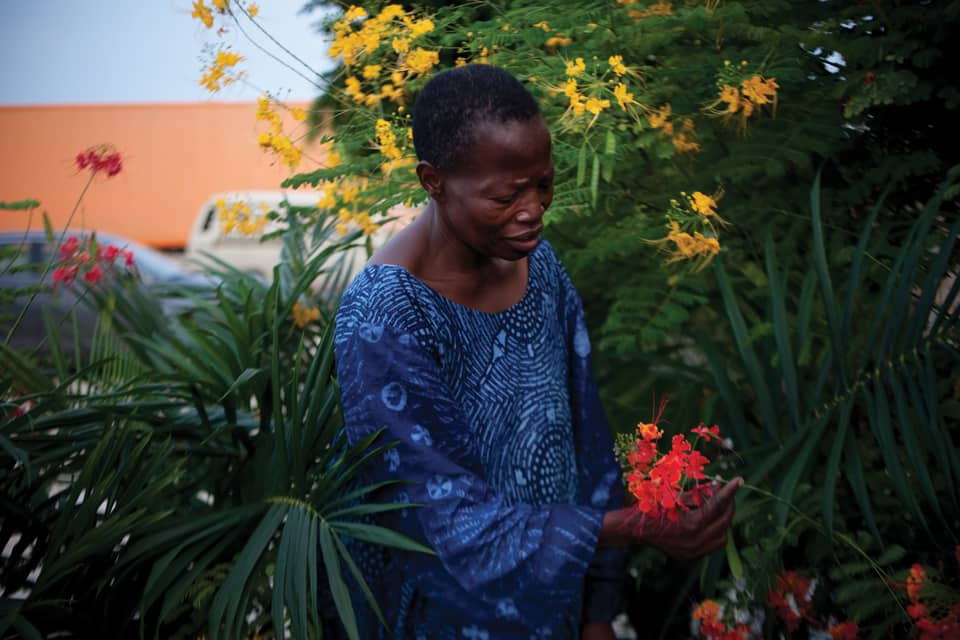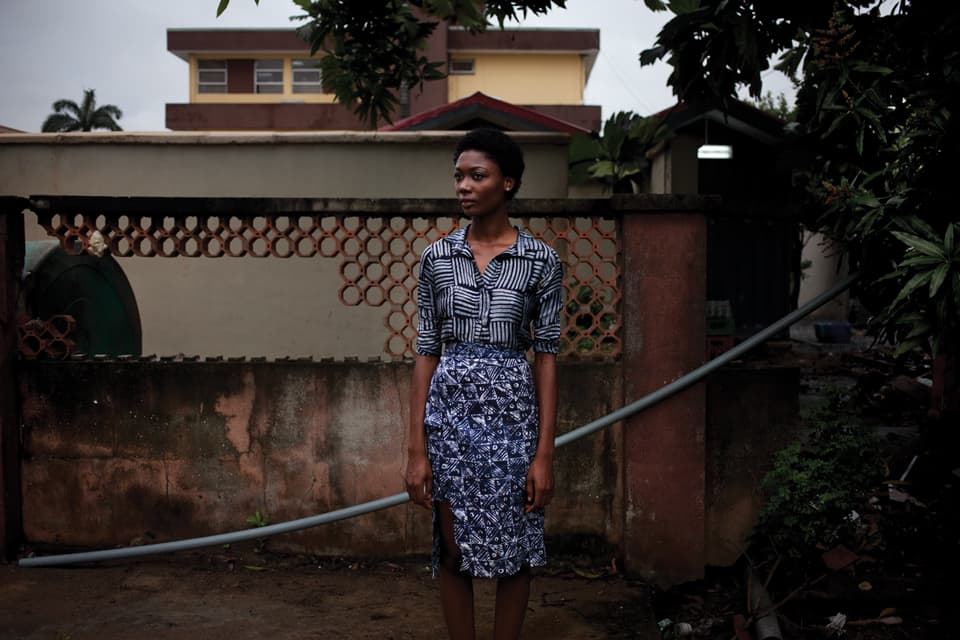Investigating the essence of Nigerian swagger, and why Maki Oh is the Lagos designer you need to know
From the magazine: ISSUE 87, June/July 2013
Mobolaji Dawodu is FADER’s style editor at large, regularly heading out with a couple of suitcases to style fashion stories all over planet earth. He’s kind of our on-staff fashion diplomat, criss-crossing the globe to find the world’s best style and bringing it home. His perspective on fashion stems in part from his childhood, when he split his time between Nigeria and the States, and he’s got an instinct for knowing what makes clothes special and beautiful no matter where they come from. He’s long endorsed his compatriot Amaka Osakwe, creative director of the Lagos-based womenswear brand Maki Oh, as a kindred spirit. Here, Dawodu speaks on how her ladylike designs embody the look and feel of Nigeria today, and why the world should be paying attention. — EMILIE FRIEDLANDER
Mobolaji Dawodu: Maki Oh is a fly womenswear line from Lagos, the largest city in Nigeria. There are a lot of people making really beautiful clothes out of Lagos right now, but Maki is the one who really gets me thinking about Nigerian style, that unique Nigerian swagger. My dad’s Nigerian and my mom’s American. My parents moved to Nigeria in the ’70s, and when they wanted to have me, they came back to the States, and then I went back to Nigeria when I was five weeks old! I stayed until I was 10. But I would say you can’t think about Nigeria without style—Lagos in particular, which is where I grew up. It’s a mega-city. The way Nigerian culture is, it’s very proud. The way people talk, the way people dress, the way people bargain for what they want, the way people charm—it’s all very stylish. It’s the hustle, it’s the charm—everything in Nigeria is an art form. There is no separation between art and life. Life is art.
Walking down the street in Lagos, there are a lot of African prints, a lot of woven fabrics, long skirts, head-ties. It’s everything from Western attire to traditional attire. That’s the amazing thing: there’s no set rules about who’s going to wear traditional clothes. It doesn’t mean you’re rich, it doesn’t mean you’re poor; everyone wears everything. There are so many influences from so many walks of life. Maki draws from the traditional stuff, because that’s where it started, but she’s mixing it up. Her clothes are beautiful and elegant and could be from anywhere, just like a lot of ensembles you see when you’re walking around in Lagos today.
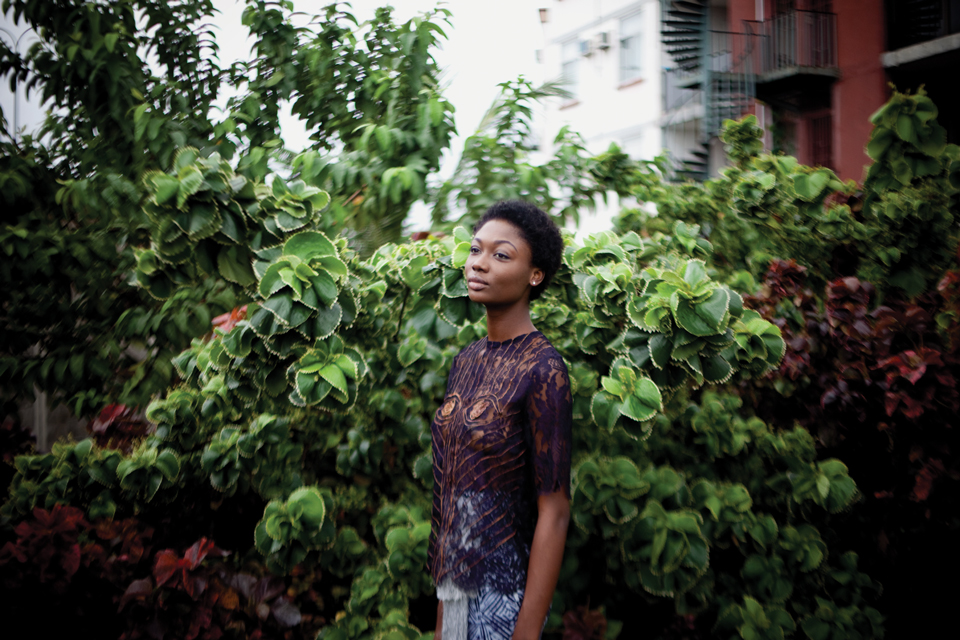
Nigerians are always waiting for a chance to dress up. Nigerian culture is big on celebrations, and Lagos especially is a big party scene. Weddings are huge, funerals are huge—parties are a huge part of my first memories. I mean partying till daytime, with streets blocked off. Part of it is showing off—showing off your wealth, showing off your outfits. If you go to a Nigerian event, a lot of times you’ll know who’s there together, who’s related. At my grandfather’s funeral, the women all wore the same outfit, the same elaborate head-ties, which are called geles. And the guys, we wore hats that matched their head-ties. Weddings—the family of the bride wears one color, the family of the groom wears another. It’s a celebration of where you come from, like, Oh, over there’s the Dawodu Family; Oh, that’s the Thomases. Any older woman, any family you go to, has a room that’s full of fabrics and they can tell you which fabrics came from which events. I have four aunts, and they all got married. My grandmother has so many different fabrics. She’ll be like, This is from so-and-so’s wedding, this is from cousin so-and-so’s funeral. She can look at the fabric and tell you the event, the year, what happened—all of that. When I was growing up, my mom actually started a clothing business, and sort of like Maki Oh, she specialized in Western-style clothes with African patterns. For my whole life, for the last 30 years, my mom has worn her own clothes, and both of my parents are quite stylish. My grandfather didn’t always wear traditional clothes, but for events, it was all crisp white, without fail. My family always had great taste. I just styled for a film that went to Sundance, called Mother of George, and the opening scene is a big wedding scene. Basically, that scene was me putting the beginning of my life into my work. I just made costumes based on what I remembered as a kid. I used some of my mom’s fabric in the film, and she’s like, Oh that’s from so-and-so’s wedding. Style is like, such a big, big deal.
“The way Nigerian culture is, it’s very proud. The way people talk, the way people dress, the way people bargain for what they want, the way people charm—it’s all very stylish.”
Maki’s work stands out because she uses fabrics in Africa that aren’t the norm. Nowadays, everybody is doing a lot of beautiful designs with African prints, or ankara—like the Turkish capital. But the fabrics that Maki uses are more obscure. When you see an African print, you look at it and you’re like, Oh that’s an African print, but what she uses, when you look at it, it’s not just about Africa. It’s a mesh of many influences. A lot of ankara fabrics are actually imported from Holland these days; the prints that Maki uses will be hand-painted and stitched in Nigeria, but they’ll be a play on those traditional designs and the stories they tell, like a dress that’s covered in eyes, or fish, or a very contemporary-looking abstract design. That’s what people find interesting about her. You can’t place it so fast and so quickly. When I think about Nigeria and style, when I think about women and Nigeria, I think about femininity. African woman are very feminine, and the femininity of Maki’s clothing—as much as it’s different from a lot of things you see in her country—is what connects it very much for me to Nigeria. Femininity is about an attitude and a way you carry yourself. Nigerian women don’t reveal as much as people reveal in the West. It’s a lot more covered up and just sexy; it’s traditional clothing and traditional fabrics and long skirts—like mermaid skirts.
Maki thinks a lot about the female form; she plays with the contrast between covering and revealing. One of her first pieces that got a lot of attention was a hand-sewn, calabash mosaic long-sleeved top that reproduced the shaded contours of the nude female chest in graphic form. More often, it’s about combining opaque fabrics with more sheer materials, about highlighting the shape of the body without directly showing much skin, or showing little glimpses of it in unexpected places. She definitely has contemporaries from Nigeria doing beautiful clothes, a lot of wonderful things, but I think she’s toned it down a bit. I think that’s why we gravitate toward her: it’s not so out-there, it’s not so bold, it’s not so obvious. It’s a little more subtle and understated. There’s just something effortless about her style, the way her clothes flow, just in the shapes. She has one of those lines where the person wearing the clothes makes the clothes. There’s a lot of room to be that woman, so to speak, the Maki Oh woman.
